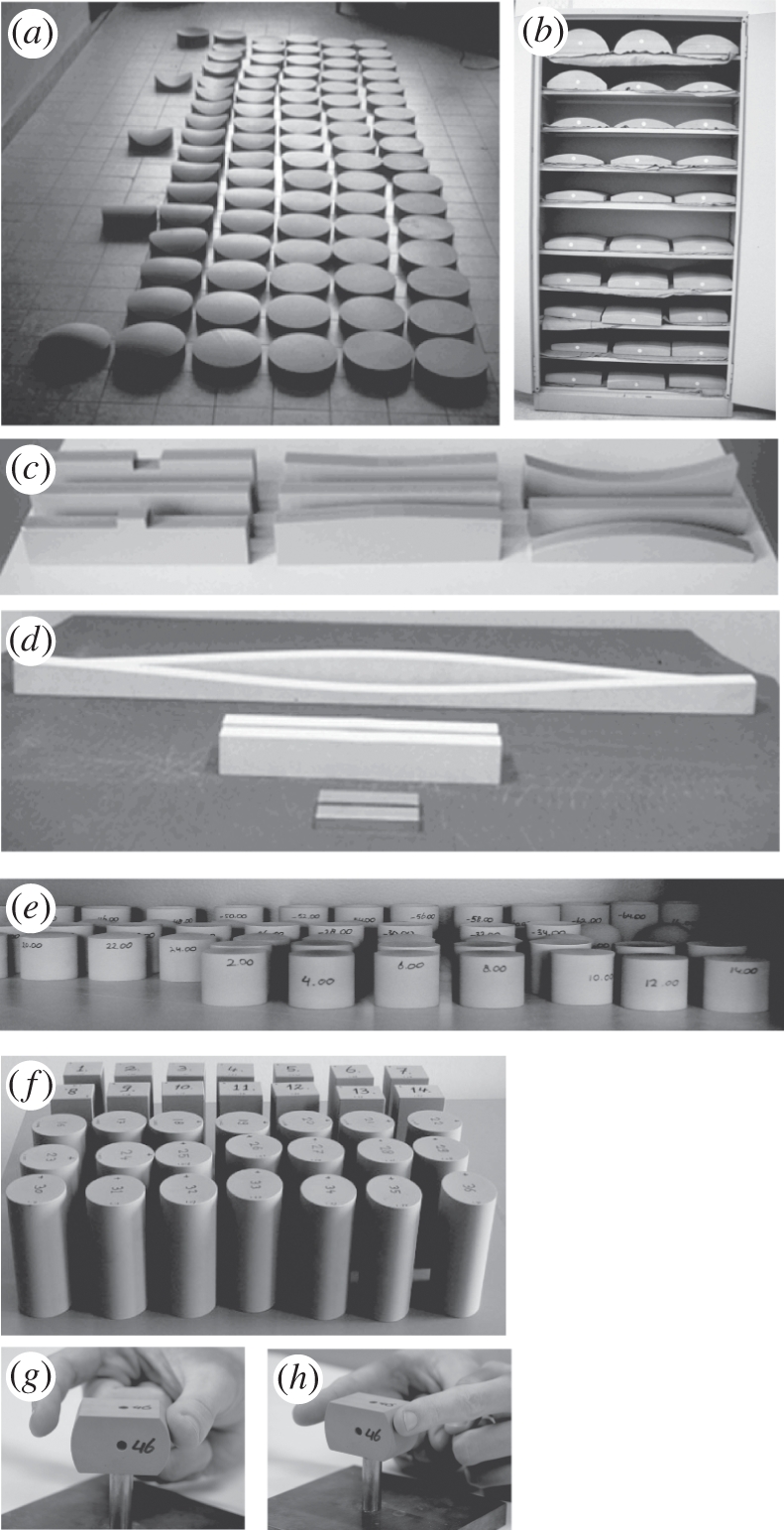Figure 1.

Stimuli used in the various studies. (a) Hand-sized convex and concave paraboloids [6–12]; (b) cupboard full of larger-than-hand-size cylindrical stimuli [13]; (c) zeroth- and first-order stimuli [14] and second-order stimuli [10,14–16]; (d) Gaussian-shaped stimuli of various scales (10, 30, 90 cm) [17]; (e) finger-sized stimuli with spherically curved top [18]; (f) blocks and cylinders with different cross sections but with identical perimeter [19]; (g) stimulus with cylindrically curved sides, index finger-thumb condition [20]; (h) like (g), two index fingers condition [20].
